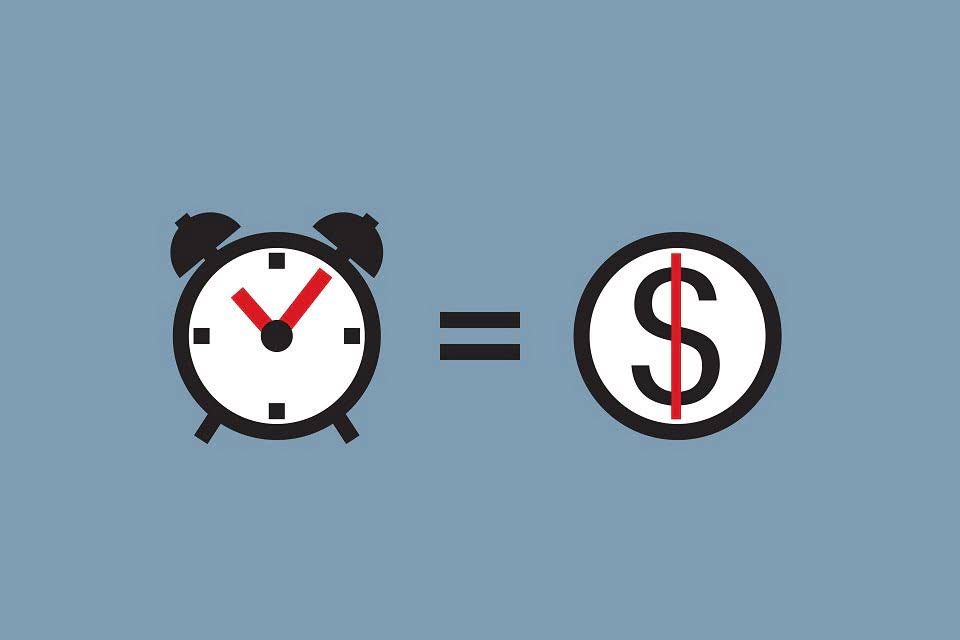Content

This is a one off cost, but is required to produce more goods and is therefore calculated within the marginal cost at a certain point. Using the first equation, total costs are 34Q3 – 24Q + 9 and fixed cost is 9, so total variable costs are 34Q3 – 24Q. Using the second total cost equation, total costs are Q + log(Q+2) and fixed cost is log, so total variable costs are Q + log(Q+2) – 2. Change in total costs – During the production process, costs can be reduced or increased at any level. This is likely to decline further or increase production volume.
- Marginal costs are important in economics as they help businesses maximise profits.
- Both values are important for budgeting, pricing, major capital expansion plans, etc., but be careful not to confuse them.
- The information on total costs, fixed cost, and variable cost can also be presented on a per-unit basis.
- Find the change in cost i.e., a difference in the total cost of production, including additional unit and total cost of production of the normal unit.
- Subtract the old cost from the new cost to get the change in cost.
- The goal of the managers of a firm is to maximize the firm’s profit.
Calculating a change in quantity involves looking at point A and point B in production and working out the difference. For instance, a business is going to be producing more and more goods as demand increases. However, it is necessary to look at how many more goods are sold between two points in order to calculate how this impacts on final profits. The management takes the help of marginal cost to evaluate the price of each unit of goods and services that is offered to its consumers.
Clarify all fees and contract details before signing a contract or finalizing your purchase. Each individual’s unique needs should be considered when deciding on chosen products. The higher the cost of capital, the more it takes away from the business’s revenue. Expanding while maintaining or increasing profits is ideal for a business. It allows the company to grow and generate higher profits for the organization.
What Is an Example of Marginal Cost?
It’s because marginal cost affects variable cost, but it does not affect fixed cost. Since some costs are fixed, there is usually part of the curve on the left where the marginal cost is very high due to an inefficiently low quantity of production. Then, with economies of scale, the marginal cost of production reaches a minimum as the quantity increases.
- This means they can keep the price low and unsustainable for new entrants, leading to a monopoly.
- With the help of a dashboard, we can do marginal cost analysis and make strategic decisions to improve business accordingly by following the trends.
- So the production will be carried out until the marginal cost is equal to the sale price.
- She is an expert in personal finance and taxes, and earned her Master of Science in Accounting at University of Central Florida.
- Examples include a social cost from air pollution affecting third parties and a social benefit from flu shots protecting others from infection.
- This can occur due to excessive growth of the company, which continues to be inefficient in business.
The second formula applies when there are multiple sources of new capital. The first formula applies when there’s only one source of new capital.
Encourages Marginal Customers
This means that the marginal cost of each additional unit produced is $25. Although they do have to hire more workers, and also purchase better and more efficient tools and machinery , they find that their production costs per unit decrease. At this point, they’re producing twice as many wallets for just $375,000 that year. Meanwhile, change in quantity is simply the increase in levels of production by a number of units. That is, subtract the quantity from before the increase in production from the quantity from after the increase in production—that will give you the change in quantity.

A company’s marginal cost is how much extra it costs to produce additional units of goods or services. You can calculate it by dividing change in costs by change in quantity. In the second year of business, total costs increase to $120,000, which include $85,000 of fixed costs and $35,000 of variable costs. In the case of fixed costs, these are only calculated in marginal cost if these are required to expand production. Variable costs by contrast are always included in marginal cost.
Change in quantity
When the marginal social cost of production is greater than that of the private cost function, there is a negative externality of production. Productive processes that result in pollution or other environmental waste are textbook examples of production that creates negative externalities. Of great importance in the theory of marginal cost is the distinction between the marginal private and social costs. The marginal private cost shows the cost borne by the firm in question. It is the marginal private cost that is used by business decision makers in their profit maximization behavior. Marginal social cost is similar to private cost in that it includes the cost of private enterprise but also any other cost to parties having no direct association with purchase or sale of the product.
She practiced in various “Big Law” firms before launching a career as a business writer. Her articles have appeared on numerous business sites including Typefinder, Women in Business, Startwire and Indeed.com. I am a serial entrepreneur & I created Marketing91 because I wanted my readers to stay ahead in this hectic business world. FundsNet requires Contributors, Writers and Authors to use Primary Sources to source and cite their work. These Sources include White Papers, Government Information & Data, Original Reporting and Interviews from Industry Experts. Reputable Publishers are also sourced and cited where appropriate.
What is Marginal Cost Pricing?
Marginal cost is an economics and managerial accounting concept most often used among manufacturers as a means of isolating an optimum production level. Manufacturers often examine the cost of adding one more unit to their production schedules. Instead of creating the table we did in the example above, we can calculate marginal cost of a unit directly using calculus. The company wanted to know whether to continue with the production or not. This can occur due to excessive growth of the company, which continues to be inefficient in business.
What is marginal cost and how is it calculated?
Marginal cost is the extra cost acquired in the production of additional units of goods or services, most often used in manufacturing. It's calculated by dividing change in costs by change in quantity, and the result of fixed costs for items already produced and variable costs that still need to be accounted for.
You are the Chief Financial Officer of Boomer Ties, a company that designs ties for men wishing to make a fashion statement. In the past year, you hired the Vice President of Sales and Distribution, Johnny Money. Johnny was paid by a commission of $1 per additional tie sold. Learn about marginal revenue and understand how to use the marginal revenue formula.
What is the Formula for Marginal Cost
Ultimately, you want to produce your product or service at the lowest possible marginal cost. If this is the case, the company should plan for this by allocating money toresearch and development (R&D), so it can keep its product line fresh. When, on the other hand, the marginal revenue is greater than the marginal cost, the company is not producing enough goods and should increase its output until profit is maximized.
These are two measures used to determine changes in the prices or values of certain products. Marginal benefit refers to the amount of money the consumer is willing to pay for additional goods produced. It decreases in proportion to the increase in consumption, i.e., the decision of consumers to consume more goods. Marginal cost is the cost one incurs from producing an additional unit of goods or services. Typically, the marginal cost increases with each additional unit. On the other hand, the marginal benefit is the utility one gains from one additional unit and decreases with each additional unit.

It incorporates all negative and positive externalities, of both production and consumption. Examples include a social cost from air pollution affecting third parties and a social benefit from flu shots protecting others from infection. It’s essential to have a strong understanding of marginal costs if you want to maximize your profits and decrease the cost-per-unit of production. Find out everything you need to know about how to calculate marginal cost.
In this case, an increased cost of production in society creates a social cost curve that depicts a greater cost than the private cost curve. Short run marginal cost is the change in total cost when an additional output is produced in the short run and some costs are fixed. On the right side of the page, the short-run marginal cost forms a U-shape, with quantity on the x-axis and cost per unit on the y-axis. Marginal cost is the change in the total cost of production upon a change in output that is the change in the quantity of production. In short, the change in total cost arises when the quantity produced changes by one unit. Mathematically, it is expressed as a derivative of the total cost concerning quantity.

In contrast, variable costs can be altered and may increase or decrease depending on the circumstances. The opposite of economies of scale is called diseconomies of scale. This is when the average cost of production increases the more units are produced. This occurs because marginal cost is above the average total cost. Diseconomies of scale are usually bad for businesses because they cannot expand efficiently. If a company increases production at diseconomies of scale, it risks average total cost becoming greater than its average profits.
Marginal cost curve
The quicker you can reach an optimum production level, the better for your business. Put simply, if the marginal cost of producing one additional unit is lower than the purchase price, the company can make a profit. – At any level of production, your costs can increase or decrease. If you need to hire an extra worker or purchase more raw materials to make additional units, for example, your production costs will increase.
- Therefore, that is the marginal cost – the additional cost to produce one extra unit of output.
- So, you can spread the fixed costs across more units when you increase production (and we’ll get to that later).
- In addition, the business is able to negotiate lower material costs with suppliers at higher volumes, which makes variable costs lower over time.
- The marginal cost intersects with the average total cost and the average variable cost at their lowest point.
- Externalities are costs that are not borne by the parties to the economic transaction.
If you need to hire several new workers to meet the desired production volume, this will lead to a record of changes in costs. It is determined https://www.bookstime.com/ by subtracting the production costs accumulated during the first batch of products from the production costs of the next set or cycle.
Enter your email and we’ll send you this exclusive marginal cost formula calculator in Excel for yours to keep. Below we break down the various components of the marginal cost formula. Marginal cost is a fundamental principle in economic theory that’s important in any business’ financial analysis when evaluating the prices of goods or services. It’s often used in financial modeling to generate and optimize cash flow. At the end of the day, a project or investment that has a higher expected return than the marginal cost of capital is always preferable. If the marginal cost of capital exceeds the potential returns you can gain from the new investment or project, it might need some tweaking. As the demand for capital increases or its supply decreases, the cost of acquiring it also increases.
Monitoring the changes in marginal revenue can provide valuable signals about the strength and stability of a business, and the feasibility of expanding operations. The marginal cost intersects with the average total cost and the average variable cost at their lowest How to Calculate Marginal Cost point. So, because the tangent line is a good approximation of the cost function, the derivative of C — called the marginal cost — is the approximate increase in cost of producing one more item. So, what is the change in costs you need for the marginal cost equation?
The purpose of analyzing marginal cost is to determine at what point an organization can achieve economies of scale to optimize production and overall operations. If the marginal cost of producing one additional unit is lower than the per-unit price, the producer has the potential to gain a profit. Marginal cost is the extra cost acquired in the production of additional units of goods or services, most often used in manufacturing. It’s calculated by dividing change in costs by change in quantity, and the result of fixed costs for items already produced and variable costs that still need to be accounted for.
In this situation, increasing production volume causes marginal costs to go down. Average total cost is total cost divided by the quantity of output. Since the total cost of producing 40 haircuts at “The Clip Joint” is $320, the average total cost for producing each of 40 haircuts is $320/40, or $8 per haircut. Average cost curves are typically U-shaped, as Figure 1 shows. Average total cost starts off relatively high, because at low levels of output total costs are dominated by the fixed cost; mathematically, the denominator is so small that average total cost is large. Average total cost then declines, as the fixed costs are spread over an increasing quantity of output.

